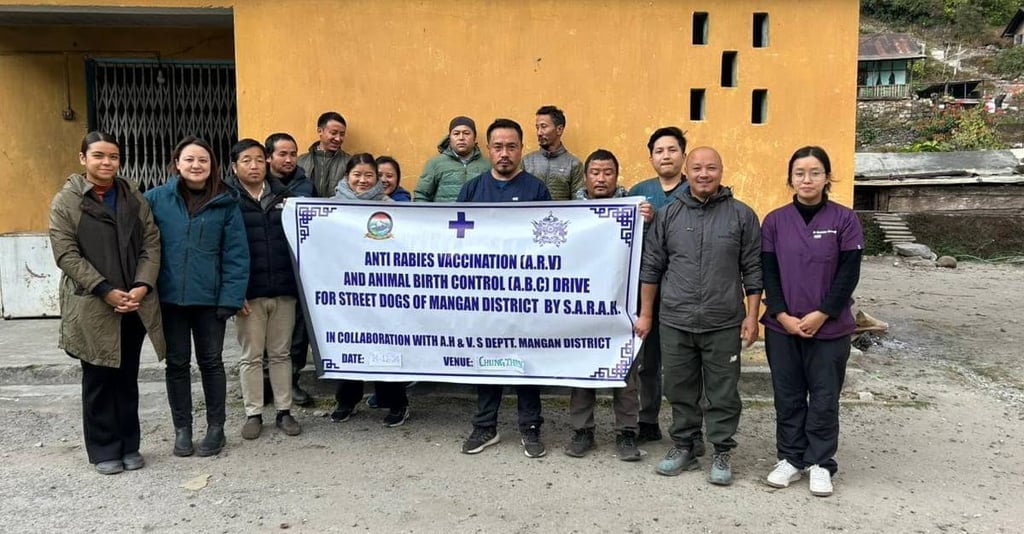Sikkim intensifies rabies elimination drive with mass vaccination and sterilisation campaign
Awareness sessions were held to inform people about the dangers of rabies, the importance of immediate medical care in case of dog bites, and the responsibility of pet owners to vaccinate their animals regularly.
LOCAL


The Sikkim Anti-Rabies and Animal Health (SARAH), in partnership with the Animal Husbandry and Veterinary Services (AH&VS) Department, has successfully carried out a large-scale vaccination and sterilisation campaign across the Chujachen constituency.
The drive, which focused on rabies prevention and controlling the stray dog population, covered multiple villages and towns in East Sikkim. During the programme, 432 dogs were vaccinated against rabies and dewormed, while 107 underwent Animal Birth Control (ABC) surgeries to regulate the growing stray population. The areas included Chujachen, Rongli Bazar, Lingtam, Agamlok, Phadamchen, Nimachen, Quekhola, Bakhutar, Maney-Sisney, Talkharka South Regu, Thokar, and Dokchin (North Regu).
Rabies, one of the deadliest zoonotic diseases, spreads primarily through bites or scratches from infected animals, most often stray dogs. Once symptoms appear, the disease is almost always fatal. In Sikkim, however, continuous vaccination and awareness programmes have drastically reduced rabies cases in recent years, making the state a model for rabies control in the region.
Officials highlighted that medical measures alone are not enough to eradicate rabies. Public awareness, community participation, and responsible pet ownership are equally crucial in preventing the spread of the disease. “People must understand that vaccination is not just for stray dogs but also for pets at home. Every vaccinated dog contributes to the safety of the community,” said a veterinary officer involved in the campaign.
The sterilisation programme, carried out alongside vaccinations, also plays a key role in addressing the issue of stray dogs. By controlling the stray population through humane Animal Birth Control measures, the risk of uncontrolled breeding, roaming packs, and potential rabies transmission is significantly reduced.
Community members from different villages also came forward to support the campaign. Local residents acknowledged that such initiatives not only protect human health but also ensure better welfare for animals. “Earlier, many villagers were afraid of stray dogs, especially during the evening hours. Now, with vaccination and sterilisation, we feel more secure,” said a resident of Rongli Bazar.
Apart from medical interventions, the campaign also placed a strong emphasis on public education. Awareness sessions were held to inform people about the dangers of rabies, the importance of immediate medical care in case of dog bites, and the responsibility of pet owners to vaccinate their animals regularly. Leaflets were distributed, and discussions were organised in local markets and schools to reach a wider audience.
The Sikkim government has long been committed to eliminating rabies, and the success of these campaigns is seen as a significant step forward. The state’s strategy involves a three-pronged approach: regular vaccination of dogs, sterilisation to manage stray populations, and widespread awareness drives. Experts believe that sustained efforts on all three fronts will help Sikkim achieve the goal of becoming rabies-free in the near future.
While Sikkim has made remarkable progress, officials cautioned against complacency. The threat of rabies still looms if vaccination coverage drops or if awareness efforts are neglected. “Rabies is preventable but not curable. Prevention through vaccination is the only way forward,” said a SARAH official.
